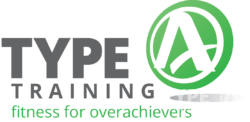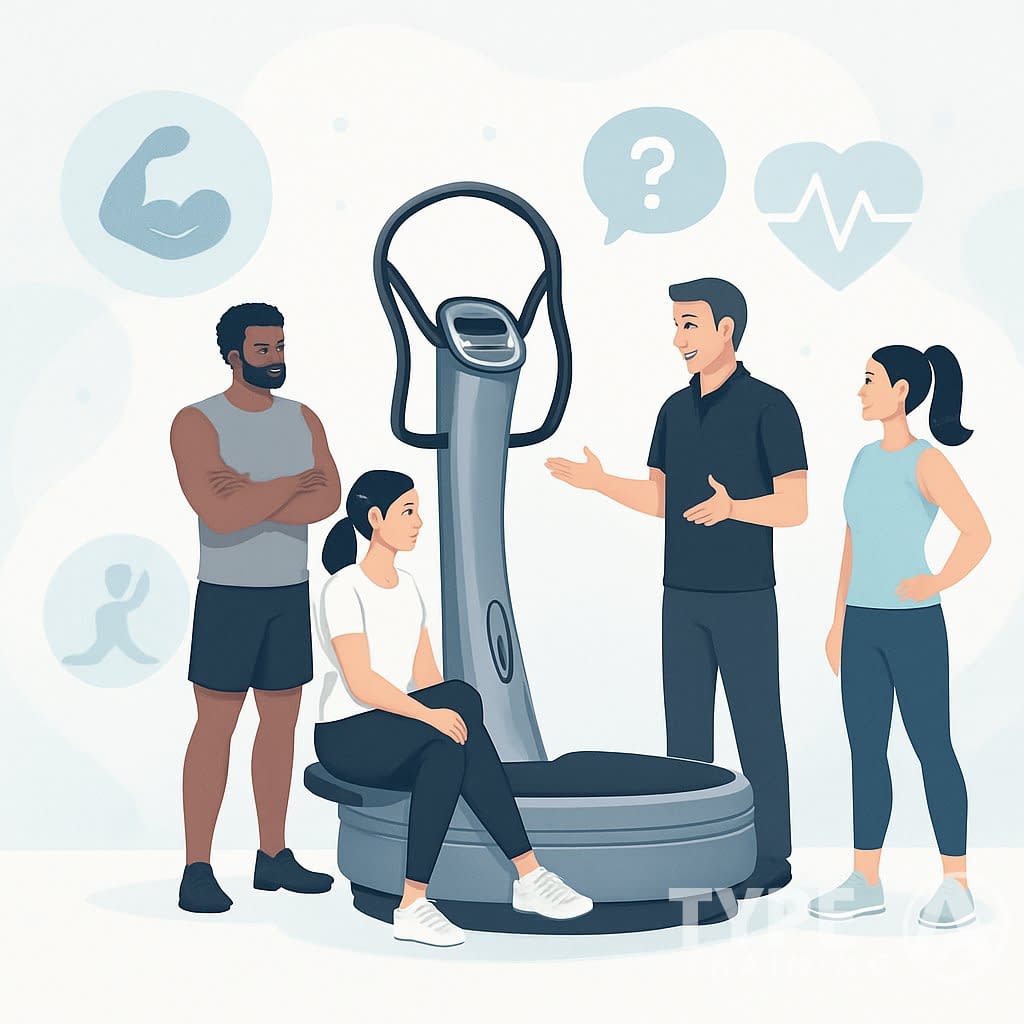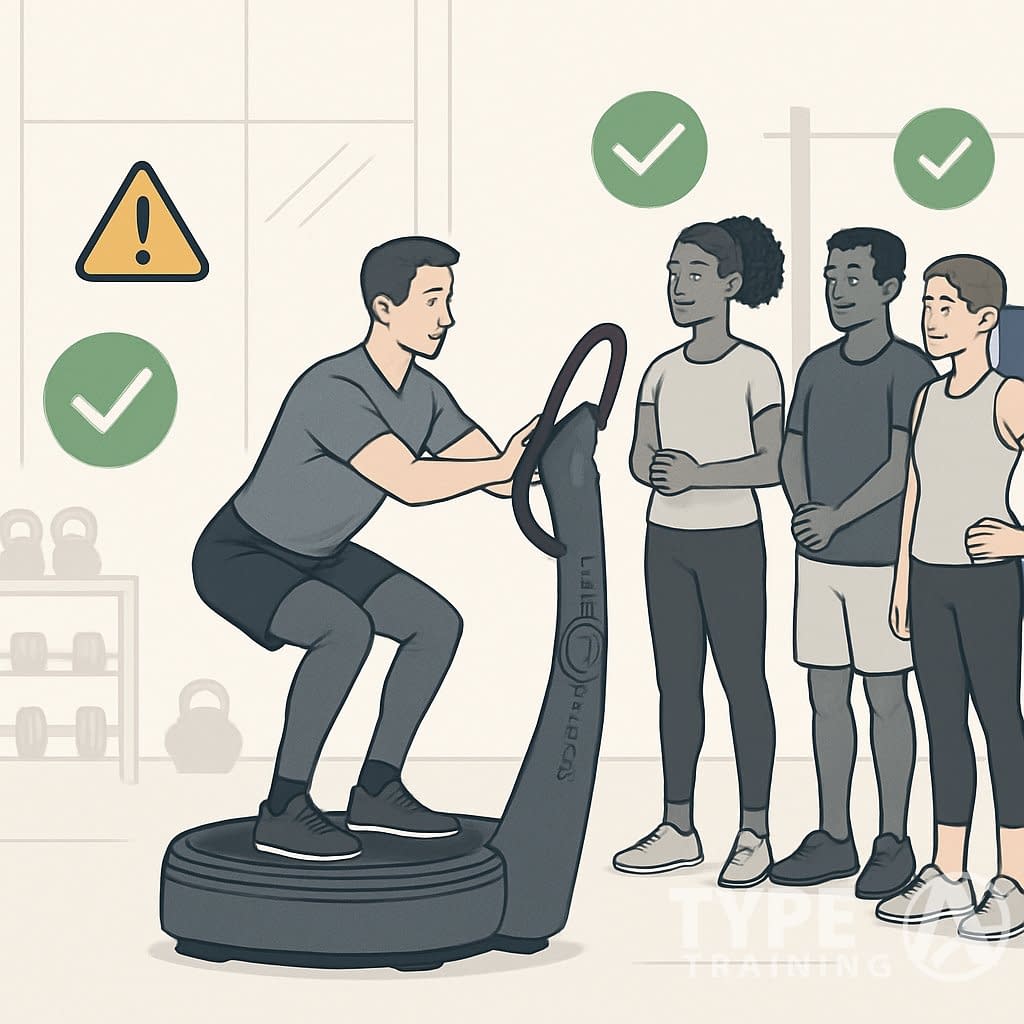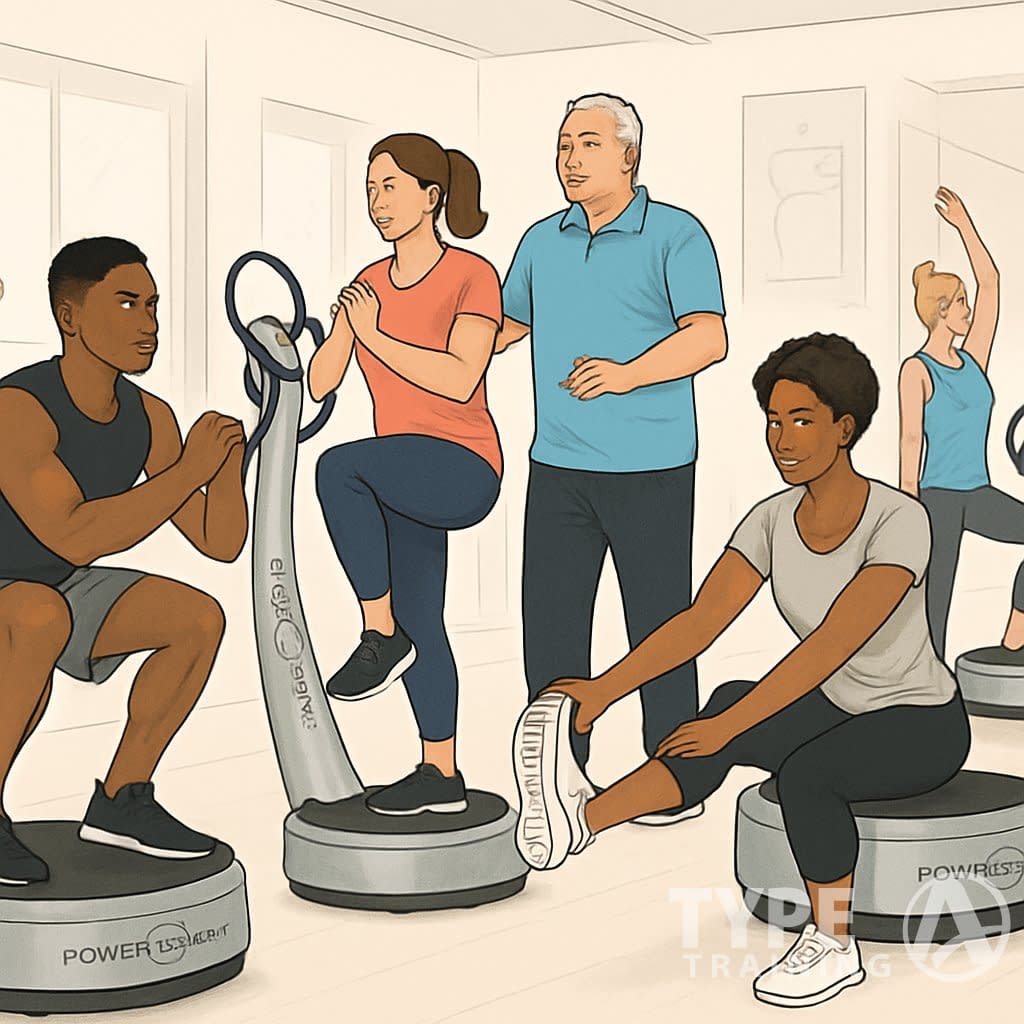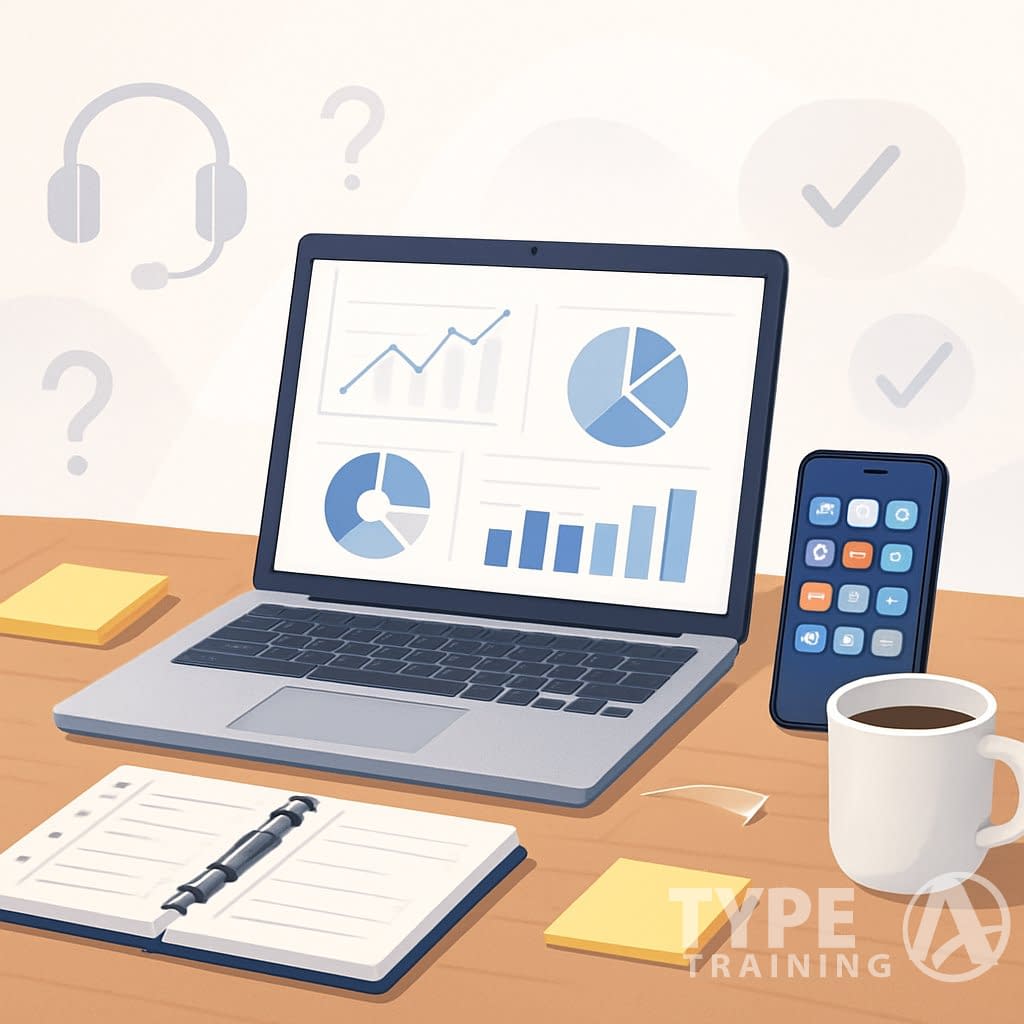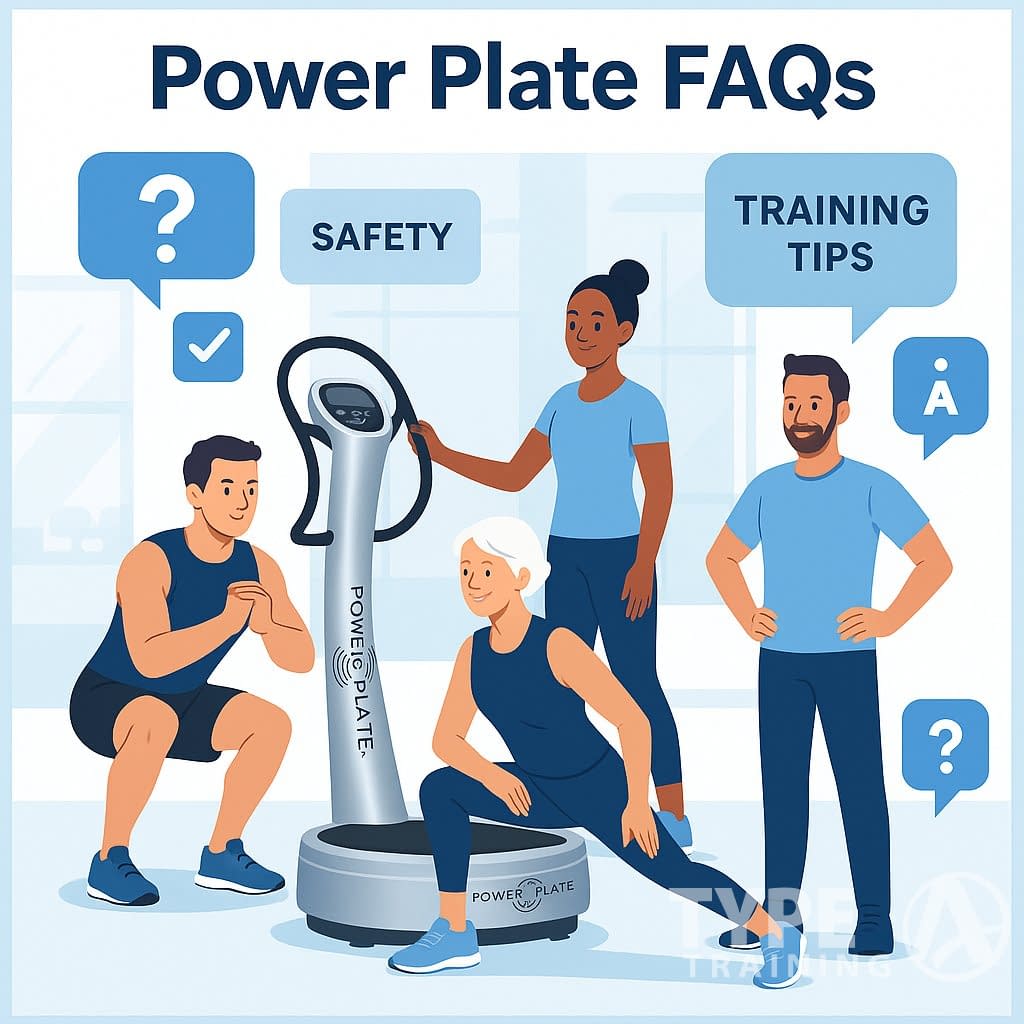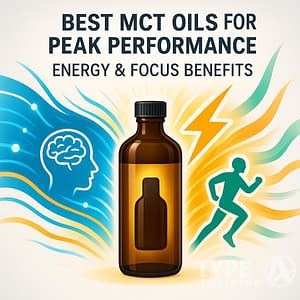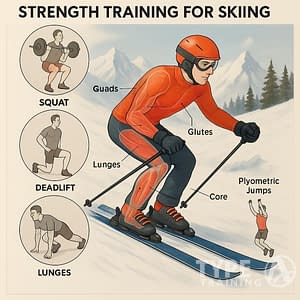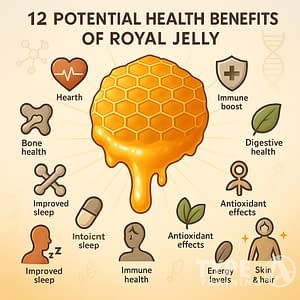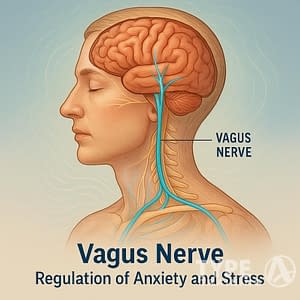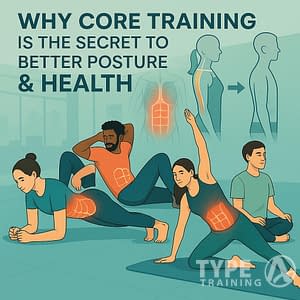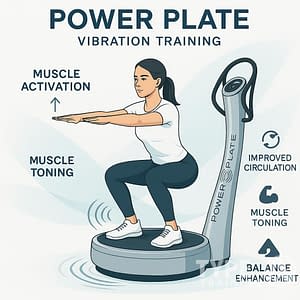Thinking about trying the Power Plate but not sure what to expect? You’re definitely not alone.
This vibration-based training tool has caught a lot of attention in gyms and home workouts for its ability to support strength, flexibility, and recovery in less time. The Power Plate sends vibrations through your body, causing your muscles to contract and relax over and over, making even basic movements surprisingly effective.
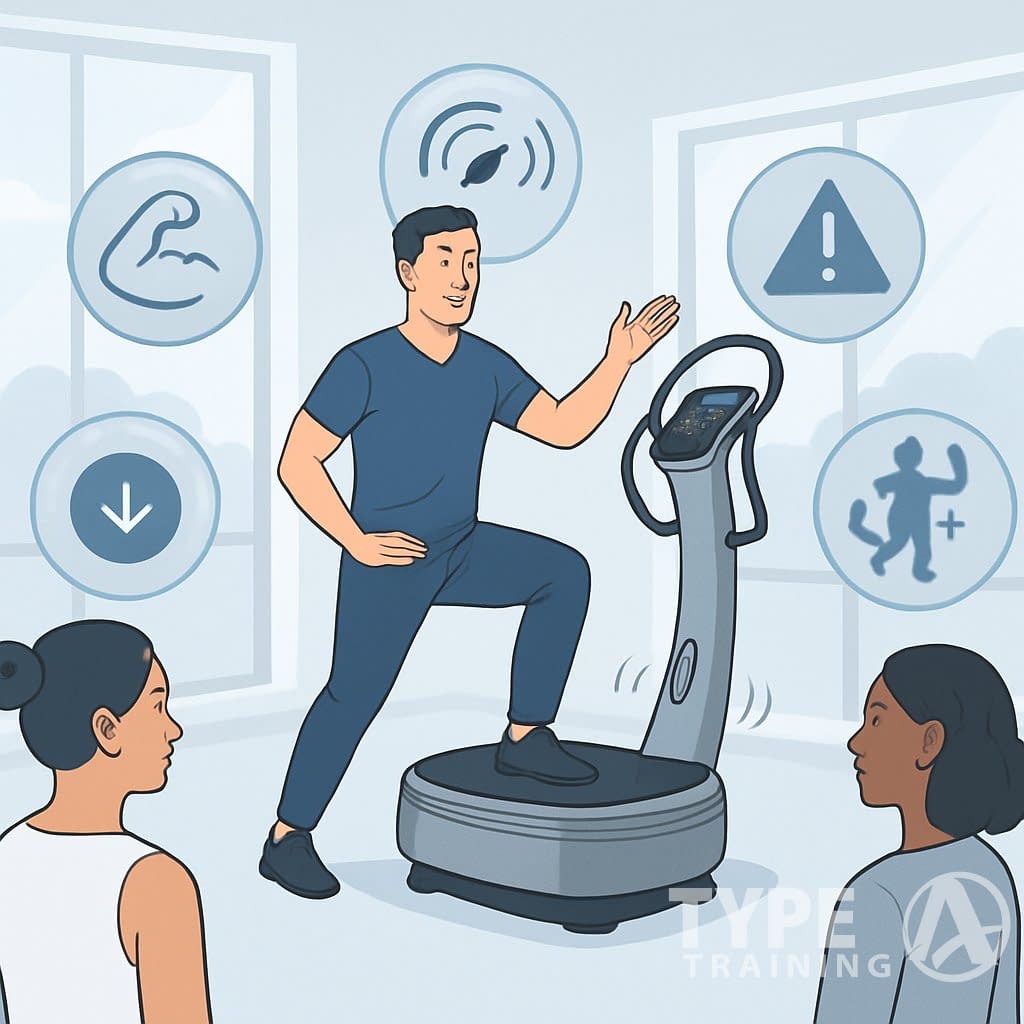
You can use it for warm-ups, strength exercises, stretching, or recovery sessions. Whether you want to build muscle, improve balance, or just make your workouts more efficient, the Power Plate gives you a flexible way to work toward different fitness goals.
Popular posts:
Knowing how it works and how to use it safely helps you get more out of every session. Before you hop on, it’s worth understanding the basics—how to start, what settings to use, and how to match workouts to your goals.
With the right approach, you can avoid common mistakes and see progress faster.
Key Takeaways
- Power Plate uses vibration to activate muscles more efficiently
- It supports strength, flexibility, and recovery in short sessions
- Learning proper use helps you train safely and effectively
What Is Power Plate and How Does It Work?
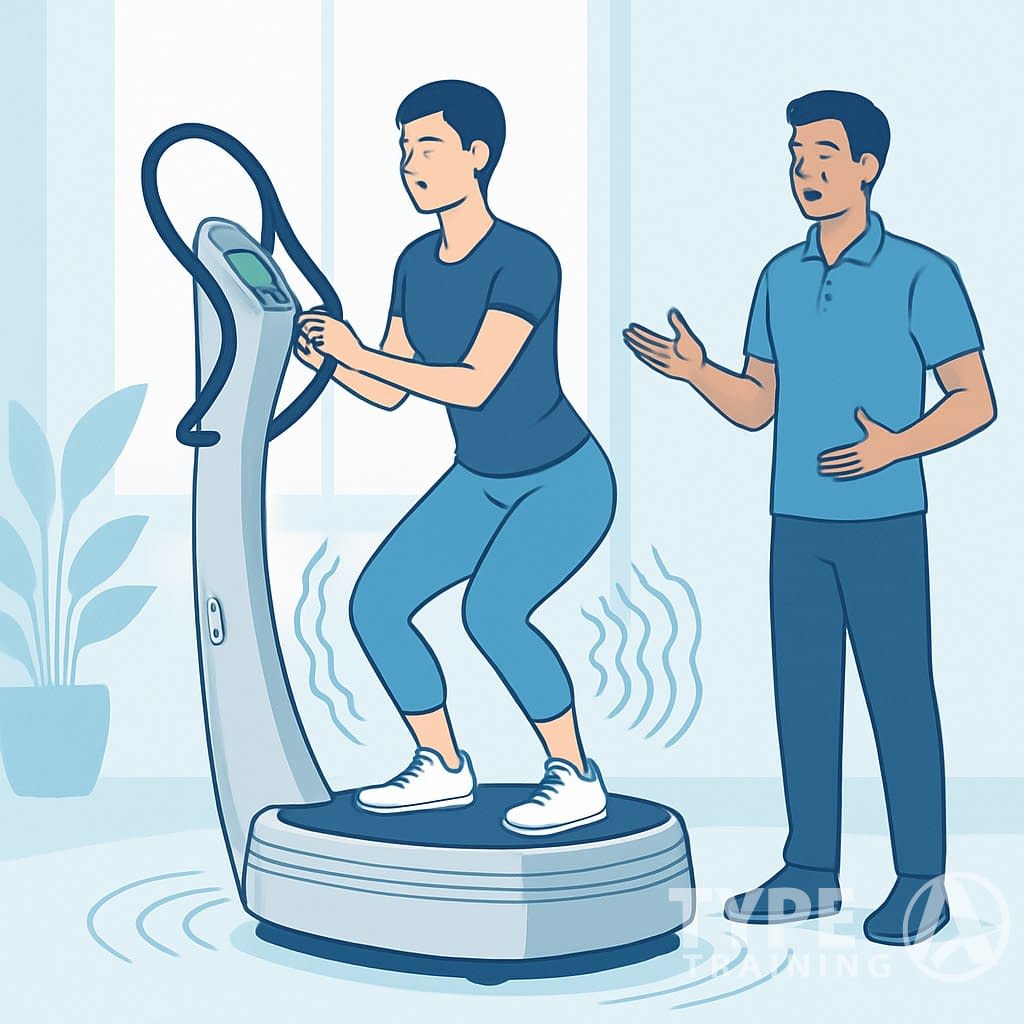
Power Plate uses vibration to stimulate your muscles, joints, and circulation in a controlled way. The machine creates small, rapid movements that trigger natural reflexes, making your muscles contract and relax many times per second.
This technology can support exercise, therapy, and recovery when you use it correctly.
Whole-Body Vibration Technology Explained
Power Plate relies on whole-body vibration (WBV), a method that applies gentle but rapid vibrations through a platform. When you stand, sit, or exercise on the machine, the platform moves in multiple directions.
These vibrations cause your muscles to contract automatically, often 25 to 50 times per second. This reflexive action is different from voluntary movement, which normally happens at a much slower rate.
You get higher muscle activation during simple positions like squats, lunges, or even just standing still. WBV also stimulates blood flow and can help improve flexibility when you use it as part of a warm-up or cool-down.
Because the machine works through natural reflexes, you don’t need heavy weights or high-impact moves to get your muscles working.
Types of Power Plate Machines
Power Plate comes in different models for gyms, clinics, and home use. Each machine uses the same vibration technology, but they vary in size, features, and portability.
Common types include:
- Power Plate pro series – large, commercial-grade units for gyms and therapy centers
- Power Plate MOVE – a mid-sized option for home gyms, with enough power for regular training
- Personal Power Plate – compact and lightweight for travel or small spaces
The main differences are in platform size, weight capacity, and built-in programs. Bigger models often have more advanced settings, while smaller ones focus on convenience.
Choosing the right machine depends on your goals, space, and budget—simple as that.
PrecisionWave and Vibration Settings
Power Plate uses PrecisionWave Technology, which delivers steady vibrations at controlled frequencies. You can adjust the vibration speed, usually between 25Hz and 50Hz, to match your comfort and goals.
- Lower frequencies (around 25–30Hz) are good for warm-ups and recovery
- Higher frequencies (35–50Hz) work better for strength and performance training
Most machines let you set the duration of each session, usually between 30 and 60 seconds per exercise. Some models have pre-programmed workouts with timed intervals, while others give you full manual control.
By tweaking these settings, you can tailor your session for mobility, muscle activation, or recovery—no need to change the basic platform.
Key Benefits of Using Power Plate
Using a Power Plate can help you build muscle strength, protect bone health, improve joint movement, and support faster recovery. The vibration challenges your body in ways that traditional training can’t always match.
Improving Muscle Strength and Bone Density
The Power Plate uses vibrations to make your muscles contract rapidly. This forces your muscles to work harder to stabilize your body, even during basic moves like squats or lunges.
Over time, you’ll likely see increased strength and endurance. Research shows vibration training can engage more muscle fibers than standard exercise, so you might get results in less time.
It’s also a good way to add variety to your strength routine. Bone density is another big plus. The vibrations put small, repeated stresses on your bones, which helps stimulate bone growth.
If you’re worried about bone health, especially as you get older, Power Plate training could be a supportive tool. It shouldn’t replace medical care, but it can complement a safe program for joint and bone strength.
Enhancing Flexibility and Mobility
The vibrations help relax tight muscles and boost blood flow. This makes it easier for your joints to move fully.
You might notice less stiffness after using the machine, especially if you sit a lot or have limited mobility. Dynamic stretches on the Power Plate can boost flexibility even more.
Movements like hamstring stretches or hip openers become more effective because the vibrations encourage muscles to lengthen and release tension. When your muscles and joints move freely, everyday tasks like bending or climbing stairs feel easier.
This can also lower your risk of strains and injuries from restricted movement. Adding short stretching sessions on the Power Plate before or after workouts helps you maintain long-term joint health.
Boosting Balance and Coordination
Balance tends to decline with age or inactivity, but vibration training can help. When you stand on the Power Plate, the platform moves in multiple directions.
Your body has to adjust constantly to stay stable, which strengthens the small stabilizing muscles in your core and lower body. This kind of training improves coordination between your muscles and nervous system.
Over time, you may find it easier to do moves that require stability, like single-leg exercises or quick direction changes. Better balance also means a lower risk of falls, which is especially important as you get older.
Even just standing with knees slightly bent on the Power Plate can activate the muscles that protect your joints. Athletes can benefit too, especially in sports that need agility, like tennis or basketball.
Growth Hormone and Recovery Advantages
Power Plate training may help your body naturally increase growth hormone, which is key for muscle repair and recovery. That means you could bounce back faster after tough workouts.
The vibrations also boost circulation, delivering oxygen and nutrients to your muscles more efficiently. Better blood flow helps clear out waste like lactic acid, so you feel less stiff after exercise.
If you tend to get sore after workouts, using the Power Plate for light recovery sessions can ease discomfort. Gentle movements or massage techniques on the platform can provide relief while keeping you moving.
These recovery perks aren’t just for athletes—they’re useful for anyone dealing with muscle fatigue from regular training. It’s a handy way to support your body’s natural repair process and keep making progress.
Getting Started: Essential Tips and Safety Considerations
Using a Power Plate can improve strength, flexibility, and recovery when you do it right. To stay safe and get results, you need to know who should use it, how to warm up, and which common mistakes to avoid.
Who Can Use Power Plate Safely?
Most healthy adults can use a Power Plate, but some folks need to be careful. If you have heart disease, joint replacements, recent surgery, or are pregnant, check with your doctor first.
The vibrations might not be safe for certain medical conditions. Kids and older adults can use it at low settings with supervision.
Start with short sessions, then increase gradually as your body adapts. If you’re new to exercise, keep the intensity low and stick to simple moves like standing, squats, or easy stretches.
This gives your muscles time to adjust to the vibrations without strain. Key tip: Always read the user manual and follow any medical warnings.
Safety comes first—especially if you have health concerns.
Warm-Ups and Stretching Guidelines
A short warm-up helps your body handle vibration training. Start with 3–5 minutes of light movement, like walking in place or swinging your arms, before you get on the machine.
Once you’re on the Power Plate, use low-intensity vibration for dynamic stretches. Try these:
- Hamstring stretch: Put one foot on the plate and hinge forward a bit
- Calf stretch: Stand with your heels off the edge and press down gently
- Torso twist: Stand upright and slowly rotate your upper body side to side
Save static stretching for after your session. Post-workout stretches can reduce stiffness and boost flexibility.
Tip: Keep your knees slightly bent during warm-ups to protect your joints.
Common Mistakes to Avoid
A lot of beginners start too fast. Using high vibration settings right away can make you sore or tired.
Always begin with lower intensity and shorter sessions. Locking your knees while standing on the plate is another mistake.
That can strain your joints and cut the benefits. Keep a soft bend in your legs at all times.
Don’t skip warm-ups or cool-downs. Jumping straight into tough exercises raises your risk of soreness and injury.
Mistakes to watch for:
- Holding your breath instead of breathing normally
- Using the machine for too long in one go
- Ignoring your posture and balance during moves
By steering clear of these errors, you lower your risk of injury and get more from your workouts.
Power Plate FAQs
Power Plate FAQs can help clarify how to maximize your workouts and understand the benefits.
You can use the Power Plate in all sorts of ways, from structured workout programs to simple moves that target certain muscles. The vibration helps you adjust intensity and tailor sessions to your personal goals.
For more information, refer to the Power Plate FAQs that cover common questions.
Workout Programs and Routines
You can follow preset routines or make your own. Most programs include warm-ups, strength exercises, balance drills, and recovery sessions.
Explore various exercises in the Power Plate FAQs section to enhance your routine.
Each routine usually lasts between 15–30 minutes, so it’s easy to fit into your day. A common approach is to break workouts into short intervals.
For example:
Utilize the guidelines from the Power Plate FAQs to tailor your workout experience.
-
- Warm-up: 2–3 minutes of light stretching or mobility
- Strength: 8–10 minutes of squats, push-ups, or lunges
Consult the Power Plate FAQs for insights on workout duration and intensity.
-
- Core: 5 minutes of planks or bridges
- Recovery: 2–3 minutes of massage or stretching
The Power Plate FAQs also clarify the ideal time frames for different exercises.
You can repeat or extend intervals depending on your fitness level. Beginners often start with shorter sessions, while experienced users might add more sets or resistance.
Targeting Different Muscle Groups
For personalized advice, check the Power Plate FAQs on exercise modifications.
The Power Plate lets you zero in on specific areas. Vibration makes your muscles contract rapidly, so even quick sets can feel tough.
-
- Lower Body: Squats, lunges, and calf raises all work your legs and glutes.
Power Plate FAQs provide guidance on how to target specific muscle groups effectively.
-
- Core: Planks, bridges, and twists fire up your abs and lower back.
- Upper Body: Push-ups, dips, and shoulder presses hit arms, chest, and shoulders.
Incorporate tips from the Power Plate FAQs to enhance your flexibility training.
You can stretch on the platform too. Try standing hamstring stretches or hip openers to boost flexibility while keeping muscles active.
Mixing up your routine helps keep things balanced and avoids overworking any one muscle group.
Be sure to refer to the Power Plate FAQs for recovery advice and routines.
Personalizing for Fitness Goals
Let your goals shape how you use the Power Plate. Want to build strength? Focus on resistance moves like weighted squats or push-ups.
Consult the Power Plate FAQs for more strategies on achieving your fitness goals.
If balance and stability are your thing, spend more time on single-leg exercises and core work.
For recovery or flexibility, switch to massage and stretching settings. These can help with soreness and your range of motion.
The Power Plate FAQs can help you understand how to adapt workouts as needed.
You can tweak frequency, duration, and intensity to match your needs:
Power Plate FAQs also detail how to safely use the equipment for maximum results.Utilize insights from the Power Plate FAQs to ensure proper exercise techniques.If you’re unsure, the Power Plate FAQs are a great resource for troubleshooting.Learn more from Power Plate FAQs about effective recovery practices.Make it a habit to check the Power Plate FAQs regularly for the latest tips.For any doubts, the Power Plate FAQs can provide the clarification you need.Engage with the Power Plate FAQs to gain a deeper understanding of your workouts.Power Plate FAQs also answer important questions about proper machine care.
| Goal | Frequency | Duration | Focus |
|---|---|---|---|
| Strength | 3–4 times/week | 20–30 min | Resistance moves |
| Balance | 2–3 times/week | 15–20 min | Core and stability |
| Recovery | After workouts | 5–10 min | Massage/stretch |
Maximizing Results: Tools, Apps, and Support
Finally, the Power Plate FAQs are essential for mastering your training journey.
You’ll get more out of your Power Plate sessions if you use digital tools, add recovery methods, and seek advice from trained staff. These resources make it easier to stay on track, sharpen your technique, and get better results.
Explore the Power Plate FAQs to unlock the full potential of your workouts.
Using the Power Plate App
The Power Plate app offers guided workouts, video demos, and training plans. You can pick from loads of routines covering warm-up, performance, and recovery.
For tailored advice, Power Plate FAQs are your go-to resource for fitness queries.
This takes the guesswork out of planning your workouts. The app also has on-demand classes and step-by-step programs so you can move at your own pace.
If you’re new, the beginner videos walk you through the basics for a safer start.
Make sure to review the Power Plate FAQs for a more productive experience.
Track your sessions and try different training categories to see steady progress. It’s like having a personal coach in your pocket—pretty handy, honestly.
Incorporating Massage and Recovery
The Power Plate FAQs can guide you in finding the right support for your needs.
Recovery deserves as much attention as the workout, if you ask me. You can use the Power Plate for massage by resting different muscle groups on the platform. Vibrations help relax tight spots and boost blood flow.
Try it before exercise to loosen up, or after training to ease soreness. For example, resting your calves or hamstrings on the plate for a few minutes can melt away tension.
In addition, the Power Plate FAQs detail various recovery techniques.
Short recovery sessions also support flexibility and mobility. Adding these massages into your schedule makes sticking with your routine easier since you’re less sore.
You don’t need long sessions—a few focused minutes can really change how your body feels.
Seek insights in the Power Plate FAQs to enhance your overall fitness routine.
Finding Support at Fitness Clubs
Many gyms now have Power Plate machines. Staff or trainers can show you how to use them safely and correctly.
Use the Power Plate FAQs to navigate your fitness journey with confidence.
This kind of guidance comes in handy if you’re not sure about your form or want help building a routine. Some clubs even offer group classes on the Power Plate, which can keep things fresh and motivating.
If your gym has instruction, take advantage of it. Getting expert support helps you avoid mistakes, learn good technique, and get more out of your workouts.
Lastly, always refer to the Power Plate FAQs for best practices and recommendations.
Power Plate FAQs
You can use a Power Plate to boost strength, flexibility, and circulation, all while keeping sessions short and structured. Safe use really comes down to proper technique, realistic goals, and regular equipment care.
What are the benefits of using a Power Plate?
You might notice better muscle activation since the platform vibrates 25 to 50 times per second, sparking reflexive muscle contractions. This can help with balance, flexibility, and circulation. Some folks also use it for post-workout recovery.
How do you properly use a Power Plate for exercises?
Start with low intensity and short sessions to get used to the vibration. Stand with knees slightly bent to protect your joints.
You can do squats, planks, or stretches on the platform, and tweak the settings as you get more comfortable.
Can Power Plate workouts aid in weight loss, and how long should a session last?
You can use the Power Plate as part of a weight loss plan, but it works best with a balanced diet and regular activity. Sessions shouldn’t go over 15 to 20 minutes.
For muscle recovery, keep it to about 2 minutes per area.
What are some effective Power Plate exercises for beginners?
Squats, lunges, and push-ups are easy ways to start. Try calf raises or seated stretches too—they help with circulation and flexibility.
Keep your movements controlled and pay attention to posture to avoid unnecessary strain.
How does Power Plate technology differ from traditional Pilates?
Pilates uses slow, controlled moves and breathing to build strength and stability. Power Plate adds vibration, which boosts muscle activation during each exercise.
Both focus on core strength and flexibility, but the Power Plate gives you an extra external kick that Pilates doesn’t.
What maintenance and service requirements should be considered for a Power Plate?
Wipe down the platform after every use, especially if there’s any sweat or dust.
Take a quick look at the power cord and controls now and then—frayed wires or sticky buttons can sneak up on you.
It’s a good idea to stick to the manufacturer’s service schedule if you want the machine to run smoothly and stay safe.
